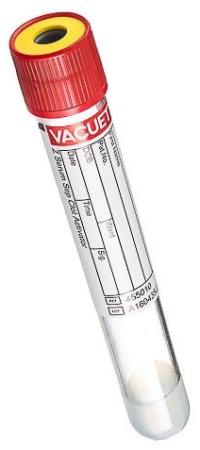
Test Code: 746
CPT Code(s): 84146
Methodology: Immunoassay (IA)
Clinical Significance: During pregnancy and postpartum lactation, serum prolactin can increase 10- to 20-fold. Exercise, stress, and sleep also cause transient increases in prolactin levels. Consistently elevated serum prolactin levels (>30 ng/mL), in the absence of pregnancy and postpartum lactation, are indicative of hyperprolactinemia. Hypersecretion of prolactin can be caused by pituitary adenomas, hypothalamic disease, breast or chest wall stimulation, renal failure or hypothyroidism. A number of drugs, including many antidepressants, are also common causes of abnormally elevated prolactin levels. Hyperprolactinemia often results in galactorrhea, amenorrhea, and infertility in females, and in impotence and hypogonadism in males. Renal failure, hypothyroidism, and prolactin-secreting pituitary adenomas are also common causes of abnormally elevated prolactin levels.
Alternative Name(s): Mammotropin; Chorionic Growth Hormon; Chorionic Growth Hormone, Pediatric; Lactogenic Hormone; Lactogenic Hormone, Pediatric; Mammotropin, Pediatric; PRL; PRL, Pediatric; Prolactin Evaluations; Prolactine w/ Tanner Stages
Supply: #T157 Red/Yellow SST 8mL
Preferred Specimen: Serum
Preferred Volume: 1mL
Transport Container: Serum Separator Tube (SST)
Transport Temperature: Room Temperature
Specimen Stability: Room Temperature: 5 days
Special Instructions: Overnight fasting is preferred.
Rejection Criteria:
- Hemolysis
- What are hemolyzed specimens?
- Hemolysis occurs when the red cells are damaged during sample collection causing them to rupture. Hemolyzed serum or plasma is pale pink to red rather than the normal clear straw or pale-yellow color.
- What causes a specimen to be hemolyzed?
- Mixing tubes too vigorously
- Placing tubes in the refrigerator without allowing 30 minutes at room temperature for complete clotting
- Exposure to heat or in a refrigerator that is too cold
- Using a needle with too small of a bore necessary for the venipuncture
- Using too large a tube when using a butterfly needle
- Not allowing sufficient time for alcohol to dry on puncture site
- Leaving the tourniquet on for longer than one minute
- How can hemolyzed specimens be prevented?
- For routine collections, use a 20–22-gauge needle
- Do not remove the needle from the vein with the vacuum tube engaged
- Do not collect a specimen in a hematoma
- Do not centrifuge the specimen for a prolonged period of time
- Draw the sample gently and evenly
- What are hemolyzed specimens?
- Specimens exceeding stability
- Specimens other than serum
- Unlabeled or improperly labeled specimens
For additional supply or collection device information, please contact DLO's Customer Service at (800) 891-2917, option 2.
The CPT codes provided are based on AMA guidelines and are for informational purposes only. CPT coding is the sole responsibility of the billing party. Please direct any questions regarding coding to the Payor being billed.
